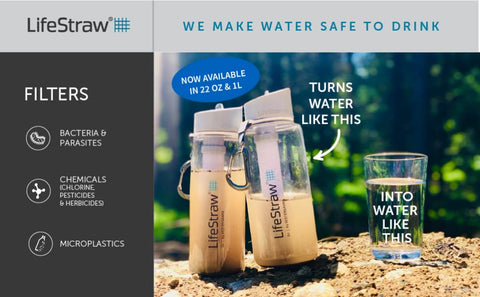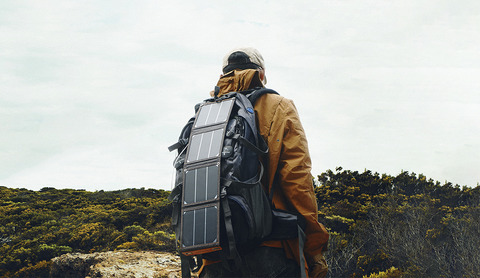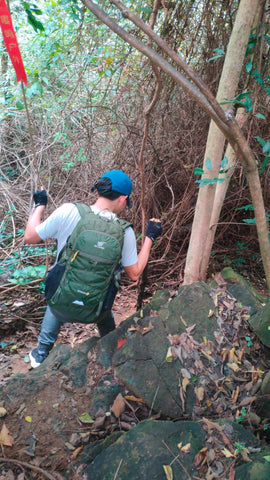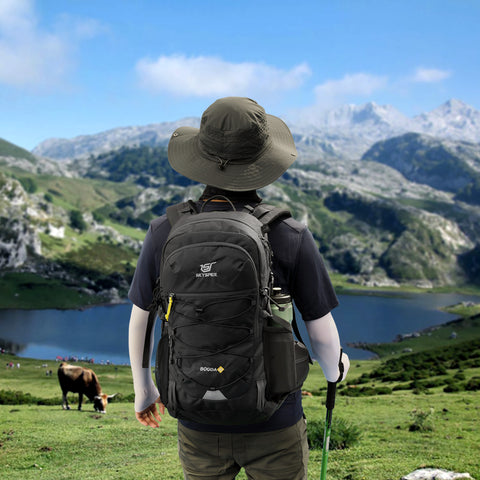The 5 Hiking Essentials You Need to Pack for Hiking

Hiking is a great way to get out and explore the world around you. It's also a great way to see how much gear you can pack into one bag!
But before you go out and buy all the things, let's talk about what you really need and why.
There are already many articles introducing the hiking essentials checklist. However, it is still difficult to decide which items are most important. We have chosen five essentials that will help you quickly pack up and go hiking.
Five Essentials
-
Enough Water and Food- To keep your energy up!
-
Portable Charger - In case you get lost and need some light.
-
First-Aid Kits - in case of an emergency
-
Hiking Gloves - Protect your Hands
-
Hiking Poles - Keep your Balance
Water and Food
When going on a hike, it's important to carry enough water and have some method of treating the water you find while out there.
To stay hydrated during activity, plan to carry water at a rate of about half a liter per hour in moderate temperatures. You may need to carry more than that depending on factors like the outside temperature, altitude, level of exertion or an emergency.
For a beginner,it is wise to carry at least one water bottle or a collapsible water reservoir. The ultimate solution is a wattle bottle with purifier that can be filled with whatever water you find, like melting snow.

Courtesy: LifeStraw
Portable Charger
Few articles mention that you should bring a power charger for hiking, but I believe it is a necessity. However, there are many articles that stress the importance of bringing a headlamp or flashlight and GPS device.
I believe that few people go hiking without mobile phones because they want to record what they see while they are hiking. Most mobile phones have built-in GPS and flashlight apps, so it is advisable to bring a power charger to ensure that your phone is always on when you go hiking.
Forget about the bulky, heavy power banks and consider a solar charger panel that can be clipped on your bag.

Courtesy: BigBlue
Make sure to check if your bag has straps for solar panels. SKYSPER hiking backpacks feature many straps, daisy chains or bungee cord to allow you to clip on many different items, such as BOGDA35. (Click the image below for additional product information.)
First-Aid Kits
It's important to carry a first-aid kit on any trip, whether it's for a day hike or an extended expedition.
Pre-assembled kits can make it easier to put together your own, but most people add or remove items based on their needs and the length of their trip.
Any kit should include treatments for blisters, adhesive bandages of various sizes and gauze pads, as well as disinfecting ointment and over-the-counter pain medication. Nitrile gloves are also important to have on hand if needed.

Hiking Gloves
When hiking, your hands are vulnerable to injury for a number of reasons. The most common is gripping the hiking poles for an extended period of time, causing wear and tear on the palms. Another common problem is suddenly grabbing a tree branch or rock in order to steady yourself if you lose your footing or start to slide downhill.
In order to reduce your risk of injury while hiking, wear protective gloves when going on long hikes or those that involve lots of uphill climbs.
There are two kinds you need to choose from: full finger or half finger. Are full-finger or half-finger better? What material should you choose? And how can you tell if the pair you found are quality or junk?
The answer depends on your preferences and the activity, but in general it's best to look for gloves that fit well and feel comfortable, regardless of whether they cover your whole hand or just the tips of your fingers. The material will depend on what kind of weather you'll be hiking in, with a few caveats: wool is breathable but retains moisture; leather supports your hand but can get very hot; neoprene is flexible, light, and waterproof.
Hiking Poles
Hiking poles may seem like a superfluous item, but they can actually be a really helpful tool for getting the most out of your hike.
There are many reasons to utilize hiking poles, but the most important is that they can prevent injuries. Hiking poles have been shown to reduce the risk of ankle sprains while also helping you maintain your balance on steep trails. They're especially useful when you're carrying a heavy load, or if you're on uneven ground or slippery surfaces like snow or wet rock.
If you've never tried them before, a great way to get used to hiking with poles is to hike around your neighborhood with a few different types of poles. Do you find yourself leaning heavily on them? Does it feel more natural to use only one? Are they making your arms sore? Once you find a pair that feels right, hit the trail with them—you'll be glad you did.
The first time I went exploring in the forest with my friends, I didn't carry hiking poles or gloves. However, my friend did bring both of these things. When going downhill, my friend had to give me his hiking poles so that I could keep my balance and he used a thick trunk as his "new" hiking pole instead. And his gloves protected his hands well while gripping the trunk to go downhill.

Conclusion
Hopefully, this guide has helped you with your next hiking endeavor. This is by no means an exhaustive list of everything that you need to bring, however. There are of course many other items that could prove useful, such as bug spray and medication. Much depends on the conditions that you'll face during the hike, the terrain, what time of year you're hiking, and so on. But hopefully this gives some good ideas for a solid start.








Leave a comment